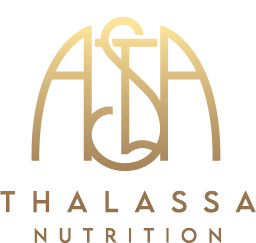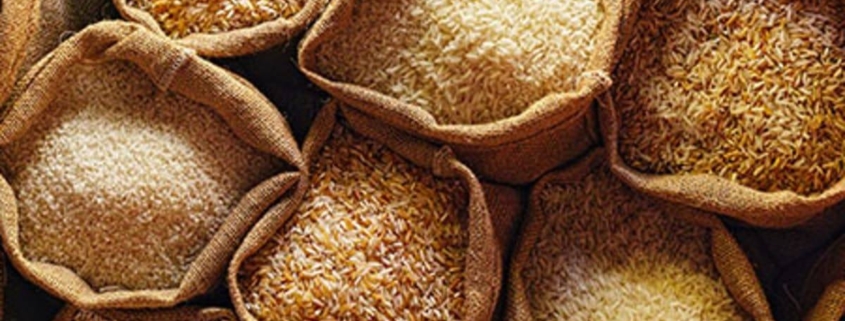Whole grain in plant-based lifestyle
Whole grains are an important part of a Vegan lifestyle. Consuming at least three servings of whole grains per day can reduce the risk of some chronic health conditions like cardiovascular disease, type II diabetes, and certain cancers. Studies also showed that eating whole grains in place of refined grains can reduce potentially dangerous excess abdominal fat, a buildup that can raise blood pressure and cholesterol levels, and even cause insulin resistance (potentially leading to diabetes)…..Don’t think of these grains as a side dish. I eat these grains as my main dish along with beans every single day…
Here are 14 organic whole grains that are the staff of life. Buy them in bulk – think of these grains as your most powerful conduit to pristine health and longevity…
1. Amaranth
Once considered a weed, amaranth is now known for its killer nutritional value. This grain is high in fiber (21 percent of the daily recommended value per cup), and it’s also a great source of the amino acid lysine and nutrients magnesium, calcium, and squalene, a compound that may help prevent cancer. Plus, it’s also a protein powerhouse: In one study, rats that consumed amaranth grew more than those that were fed maize thanks to the grain’s 9 grams of protein per cup. It also has cholesterol-lowering potential….I mix it with quinoa, it takes the same amount of time to cook……
2. Kamut
Kamut is the brand name — and most commonly used name — for the ancient Khorasan strain of wheat. It’s a great source of protein, with 11 grams per cup, as well as nutrients like selenium, zinc, and magnesium. One study even showed that rats that consumed kamut had better responses to oxidative stress than those that had eaten wheat, which basically means kamut has is higher in antioxidants than regular wheat. Kamut should be soaked for 24 hours. I mix kamut with whole barley, spelt and wheat berries along with beans like mung, adzuki, and garbanzo…Rinse them thoroughly after soaking them and simmer for about 40 minutes. Turn the heat off and add vegetables and allow them to steam…….delicious!
3. Millet
Formerly used primarily as bird feed in the U.S., millet is increasing in popularity among humans, whether it’s prepacked like rice or made into flour and used in baked goods. It’s a good source of protein (6 grams per cup) and has been shown to help control glucose levels. Another benefit of keeping glucose levels in check? When blood sugar levels are steady, energy levels are steady….Millet is another grain that takes 15 minutes to simmer, mix it with the quinoa and amaranth…..You can also add lentils, top it off after it is done with chopped tomatoes, parsley, and lemon…….
4. Teff
These teeny tiny grains pack a sizable nutritional punch: Teff is surprisingly high in calcium (one cup contains 12 of the daily recommended value) and vitamin C, a nutrient not often found in grains. Plus, it’s gluten-free, making it perfect for those with gluten sensitivity or celiac disease. Teff is primarily made of high-resistant starch, which can help prevent colon cancer. Resistant starches aren’t immediately digested when traveling through the small intestine. Instead, they hang out in the large intestine, where bacteria feed on them and create fatty acids that make the environment less welcoming to bacteria that can harm the colon[13]. A study also showed that people who ate muffins high in resistant starch felt fuller than those who ate muffins without. Teff’s tiny size (about the size of a poppy seed) allows it to cook quickly compared to other grains, ranging from 12 to 20 minutes depending on the desired texture…..Teff can be combined with 15-minute grains ……..
5. Quinoa
Quinoa is an excellent protein source and contains all essential amino acids (useful for vegans and vegetarians). One cup of ready-to-eat quinoa has nearly 10 grams of protein or twice the amount of protein found in other cereal grains, it also has 5 grams of fiber, for just 220 calories.
Quinoa is also a good source of beneficial minerals, including copper, manganese, iron, and magnesium, plus B-complex vitamins. All of these trace elements and nutrients are necessary for chemical reactions for producing energy out of your foods. Quinoa also offers potassium and good fats that are beneficial for your blood pressure and heart.
6. Farro (aka Emmer)
Same grain, different name (depending on location) — emmer is the American term for while it’s known as farro in Italy, where it has a rich history: This ancient strain of wheat was rationed to Roman soldiers thousands of years ago! A half-cup of farro has more fiber and fewer calories than brown rice or quinoa,…Love Farro, it takes 30 minutes to simmer, I add raw vegetables at the end and avocado with lemon….. If you can’t find it in the U.S., buy it directly from Bluebird organic farms. They are a great family-owned business and will ship it the same day…
7. Hulless Barley
Barley dates back to the Stone Age and can take on many roles. It can be ground into flour or meal for baked goods, added to soups and stews in its pearled form, and (of course) malted to make beer or whiskey. Since it’s high in fiber (almost a quarter of the daily recommended value in one cup of the pearled stuff), it may help prevent some chronic diseases and lower cholesterol….I love hulless barley, make sure to buy it in bulk and organic and don’t confuse it with pearl barley. Pearl barley which is barley without nutrition, kind of like white rice compared to brown rice….. I eat hulless barley every day. I make a huge batch with three cups of hulless barley in a large pot with lots of water. I simmer for 40 minutes and let stand for another 15 minutes. I drain the barley out of the water and save it to add to my stews every morning. I then pour the barley water into glass containers. Barley water is a magnificent source of superior nutrients. I simmer my stees in barley water every morning. Many advanced holistic cultures consider barley water the most powerful healing medicine there is. Google hulless barley water and research on your own the amazing health benefits of barley water. Hulless barley and garbanzo beans are the two anti-aging foods I eat in abundance every day.
8. Bulgur
Bulgur, another derivative of wheat, it’s the result of boiling, drying, and cracking wheat kernels. It’s incredibly versatile in dishes and cooks in about the same amount of time as pasta. With 8 grams of fiber per cup or 33 percent of the daily recommended value, bulgur beats out quinoa, oats, millet, buckwheat, and corn in that category.
9. Spelt
Spelt is a type of wheat that is higher in protein than other types, and — in flour form — can easily be used as a substitute for wheat flour in recipes. There is some evidence that those with sensitivity to wheat can tolerate spelt, but other research suggests those with gluten intolerance might still want to hold off.
10. Buckwheat
Native to Russia, buckwheat is actually not a type of wheat at all — it’s a herb! More closely related to rhubarb than to wheat (making it gluten-free!), its seeds are ground into flour or crushed to make groats, which are cooked like rice. Buckwheat may also help lower cholesterol levels by binding to cholesterol molecules and dragging ‘em out of the body on its way through the digestive system. It can also be helpful in treating diabetes because it naturally contains a compound that lowers blood glucose levels]. Buckwheat is the main ingredient in most soba noodles and these pancakes, but pairing it with pickles could also work…..Another favorite of mine that it takes 15 minutes to simmer. I add lentils and top it off when serving with tomatoes, lemon, and an avocado….
11. Red rice
A type of yeast growing on rice grains yields this fun colored food — and the health benefits are pretty astounding. Long used for its medicinal properties in Asian countries (back in the 1300s), it was used in China to aid in digestion, blood circulation, and spleen health), red rice extract is gaining popularity in the US for its cholesterol-lowering properties. Red rice can also refer to a type of rice with a red husk, which is high in fiber, has a nutty taste, and, when mixed with other foods, can turn the dish a festive shade of pink or red.
12. Rye berries
Everyone knows about rye bread, but the grain can also be eaten in its berry form. Rye berries can be cooked like rice or barley in pilafs or soups, though cooking can take up to an hour. Not a fan of rye bread? Don’t be discouraged — that distinct flavor comes from caraway seeds added to the bread, not the rye itself, so dishes made with rye berries won’t have the same taste. As for health benefits, it’s hard to beat rye: One study showed that rye contains a peptide called lunasin, which could play a role in cancer prevention. Another showed that rye fiber appears to be more effective than the wheat fiber in improving bowel health. Another grain that can be simmered with whole barley, wheat berries, kumut, and spelt…..
13. Wheat berries
Wheat berries are a way to get wheat in its most natural state — whole kernels with only the hull removed. This means they contain all the grain’s nutrients and minerals. One half-cup serving is a great source of selenium, manganese, phosphorous, magnesium, and lignan, a phytochemical that may help protect against breast cancer. Once cooked (simmered in boiling water for up to an hour should do it), they are a great addition to soups, stews, and salads (like this wheat berry salad with strawberries and blueberries). Since wheat berries are quite literally whole wheat, they may be more filling than a similar amount of food made with wheat flour.
14. Forbidden Black Rice
The Long-Lost Superfood”, a treasure house of antioxidants, fiber, nutrients, minerals and amino acids capable of combating and preventing a host of health problems ranging from cancer, diabetes, and heart disease to Alzheimer’s. Apparently, the emperors of ancient China were right. The black, outer layer of this rice, contains antioxidant-rich bran. The purple and reddish pigment of this rice, which gives it its black appearance, contains Anthocyanins, the same antioxidants found in such prominent superfoods as blueberries, Acai berries, and grapes. Forbidden Black Rice is one of my favorite grains. It takes 30 minutes to simmer. I either eat the black rice by itself or I mix it with Farro. I add tomatoes, lemon, parsley and avocado when I serve it…..Really delicious and a great replacement for brown rice

 no
no
 no
no